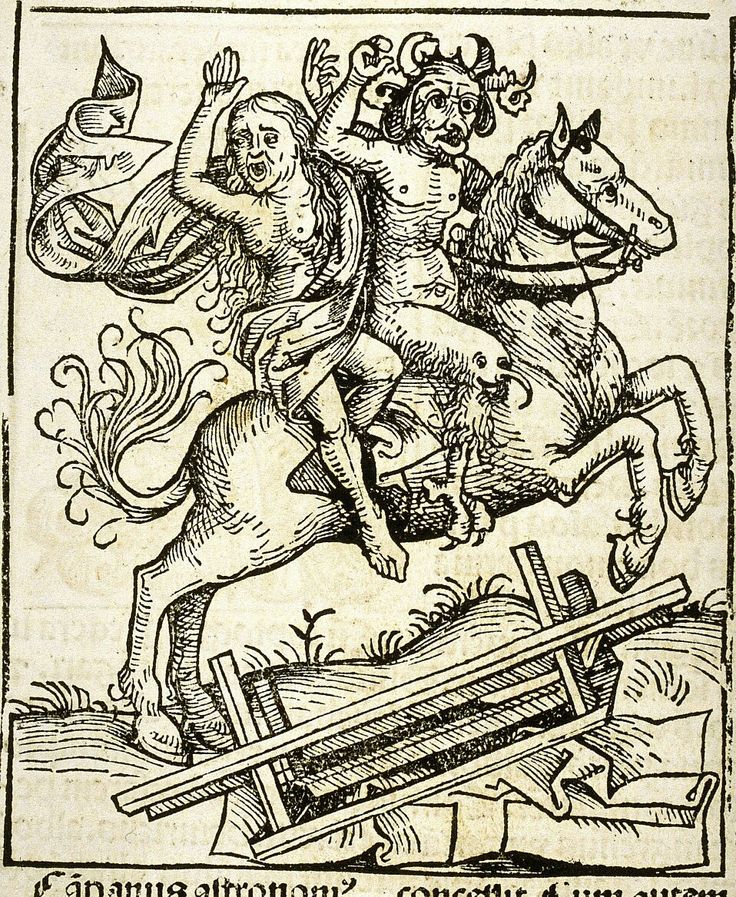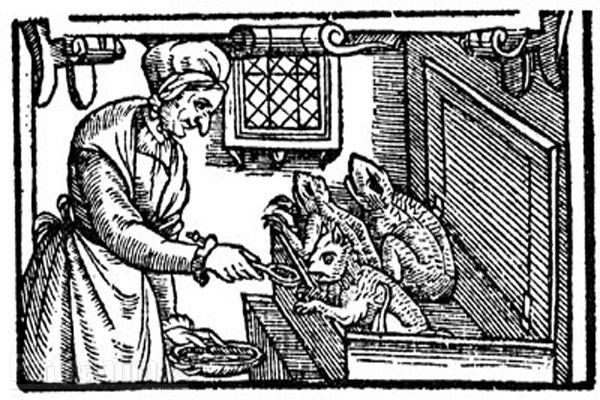In Western demonology a familiar is a demonic spirit who attends upon a witch, possessing supernatural powers that can be used for either good or evil.[1] Isobel GowdieScottish woman accused of witchcraft in 1662 and probably executed, whose detailed testimony provides one of the most comprehensive insights into European witchcraft folklore at the end of the era of witch-hunts. ‘s familiar, although it helped her to wither crops and kill a man, also taught her spells to cure fevers and heal broken limbs.[2] In English witchcraft trials a familiar would commonly be described as having taken the form of a small animal such as a cat, mouse, toad or ferret,[1] but even insects – particularly bees and flies – were also identified in witch trials.[3]
The historian James Sharpe has suggested that the familiar may be a “folklorised version of the demons and other denizens of the spiritual world, which the learned magicians of the Middle Ages were meant to be able to raise”. One significant difference though is that almost all 16th-century witches testified that their familiar appeared to them uninvited, whereas the spirits of the Middle Age magicians were conjured by them to appear.[4]
The link between witches and familiars was articulated in the Witchcraft Act of 1604Series of Acts passed by the Parliaments of England and Scotland making witchcraft a secular offence punishable by death., which imposed the death penalty for anyone who communed with familiar spirits. Accounts of familiars in witchcraft trials is an “almost uniquely English phenomenon”, for reasons which are unclear,[3] but they do also feature in some Scottish trials, where they may adopt a human form.[1] Elspeth ReochScottish woman who confessed to witchcraft and deceiving islanders by pretending she was mute. , at her trial in Kirkwall in 1616, admitted to having had several rendezvous with the Devil, who had assumed the form of a fairy.[5] It was common for Scottish inquisitors to transcribe the word devil or demon in place of any appellation for a fairy an accused witch may have used in their statement,[6] and the historian Emma Wilby has suggested that regional variations in fairy belief may have played their part in the evolution of the familiar. She argues that familiars and fairies may not really have existed as separate phenomena, but instead as a “matrix of thought which underpinned the whole construct of the witch’s familiar in the popular mind”.[1]
First encounter
The familiar was sometimes given to a witch as in the case of Margaret Ley from Liverpool, who in 1667 claimed that her mother had bequeathed her familiar to her when she died.[7] In other cases the spirit was described as having appeared out of the blue; Joan Prentice, one of the Essex witches, claimed during her interrogation in 1589 that she was “alone in her chamber, and sitting upon a low stool preparing herself to bedward” when her familiar first appeared to her.[8] But most familiars were said to appear when the individual found herself in straitened circumstances, offering their magical powers to help, such as the case of Agnes SampsonScottish midwife, cunning woman and healer; central figure in the North Berwick witch trials., struggling to provide for herself and her children after the death of her husband.[9]
Nature of the relationship

Wikimedia Commons
The relationship between a witch and her familiar could be long-lasting. Witches sometimes claimed that their familiars lived in or near their houses, similar to a domestic fairy or brownie. Other familiars would appear unbidden, but in most cases they came in response to some kind of request, although not usually an overt conjuration.[a]The Wiltshire cunning woman Anne Bodenham (1653), for example claimed that she could “raise spirits by reading books”.[10] The Huntingdonshire witch Elizabeth Chandler claimed in 1646 that she had no control over when her two familiars, Beelzebub and Trullibub, appeared to her, and had prayed for God to “deliver her therefrom”.[11]
The stereotypical pact between a witch and her familiar had two core elements: that she renounce her Christianity and that she pledge her soul to the Devil, to be handed over after a specified number of years or at death.[12] She may also have been required to have sexual relations with the Devil, and allow herself to be marked as belonging to him.[13] The mark could be a skin blemish or something that witchfindersMethods used to identify witches. such as Margaret Aitken, the Great witch of BalweariePivotal figure in the great Scottish witchcraft panic of 1597. , claimed to be able to recognise in a witch’s eyes.[14][b]During 1597 Margaret Aitken was was responsible for the conviction and execution of hundreds of Scottish women before being exposed as a fraud.[14] Familiars sometimes demanded to be nourished with milk, bread, water, or the witch’s own blood.[3] If no immediately discernible stamp from Satan was detected, the accused witch’s body could be prickedMethods used to identify witches. to discover any blemishes or invisible marks that did not bleed or elicit pain when stabbed with a needle up to three inches (8 cm) long,[15] considered to be a sure sign of the “teat” by which she fed her familiar. Torture was illegal under English law, but as the intention of pricking was to identify areas that felt no pain, the procedure was not classified as judicial torture, and so was permitted as a method of gathering evidence of witchcraft.[16]

